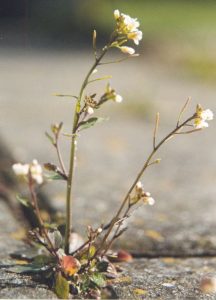When watching Matt Damon’s “The Martian” did you ever wonder how growing potatoes would be possible on a planet like Mars? Well so did I. After watching that movie, I couldn’t stop thinking about how plants actually grew, then I couldn’t stop thinking about how it would be possible to grow plants on a foreign planet in a gravitational environment much lower than that of our own. Just the image of Matt Damon’s character planting his potatoes inside the station he was living in on Mars and becoming the first person to grow life on Mars blew my mind.

Luckily, others have also been thinking the same thing for years. In an age where colonizing space is upon us, the question we all have to ask ourselves is how we are expected to grow plants in lower gravity. As we expand our horizons into space and attempt to colonize foreign places, we have to ask ourselves several questions aside from how we are going to get there, such as what are we going to eat and how are we going to produce a stable food source somewhere so far from home? While resources can be launched into orbit, it is extremely expensive. If we are going to colonize Mars, we are going to have to figure out how to grow plants there in an environment with microgravity, or an environment with gravity levels significantly less gravity than ours on Earth.
Current Research
Former experiments on the space shuttle Discovery aimed to study the molecular effects that microgravity had on plant cell development and gene expression using centrifugation which resulted in the conclusion that cells showed a high expression of Heat Shock Protein (HSP) genes after centrifugation (3). HSP’s control the stabilization of proteins that have denatured when the cells are under stress. Interestingly, these proteins are names so because normally, they are active most under extreme heat. So why is gravity affecting them? Centrifuges allow us to place plant cells in many different microgravity environments. The only problem though is that they need to be in space. While these experiments are cool and everything, we can’t exactly send everyone to space, all though that would be cool! Instead, we can use machines used to reduce gravity on earth called Random Positioning Machines (RPM) (1). With these RPM’s, it is possible to test the effects of microgravity in a laboratory as opposed to a space station or an airplane flying in parabolas (2).
My Proposal
Current literature has not determined the effects of cell tissues under RPMs compared to centrifuges. In order to gain a better understanding of the effects of RPMs on HSPs in plants, I designed an experiment to quantify the effects they have on plant cells from the plant Arabidopsis thaliana. By quantifying the change in expression of these HSP genes in Arabidopsis thaliana, we could potentially find a cheaper and more efficient way to understand the effects of microgravity on the growth of plants. I want to compare the levels of expression of HSPs that are shown between plant cells that are exposed to extreme heat, plant cells that are placed in RPMs, and the data from the plant cells placed in centrifuges above the International Space Station.

The main goal of my research is to produce a cheaper and more efficient method to testing the effects of microgravity on plants than the methods we currently have. With the addition of a more efficient and cheaper method, the ability for us to streamline research and determine appropriate environments for us to grow plants in microgravity environments can allow us to become Matt Damon from The Martian. All of the science fiction we love to watch and read could be a reality, and it starts here.
References
- Klaus D.M. “Clinostats and bioreactors”. Gravitational and Space Biology Bulletin, vol 14, issue 2, 2001, pp. 55–64. https://proxying.lib.ncsu.edu/index.php/login?url=https://search.proquest.com/docview/71266361?accountid=12725. Accessed 12 December 2019.
- Kraft T.F.B., van Loon J.J.W.A., Kiss J.Z. “Plastid position in Arabidopsis columella cells is similar in microgravity and on a random positioning machine”. Planta, vol 211, issue 3, 2000, pp. 415–422. https://doi.org/10.1007/s004250000302. Accessed 12 December 2019.
- Zupanska A.K., Denison F.C., Ferl R.J., Paul A.-L. “Spaceflight engages heat shock protein and other molecular chaperone genes in tissue culture cells of Arabidopsis thaliana”. American Journal of Botany, vol 100, issue 1, 2013, pp. 235–248. https://doi.org/10.3732/ajb.1200343. Accessed 12 December 2019.